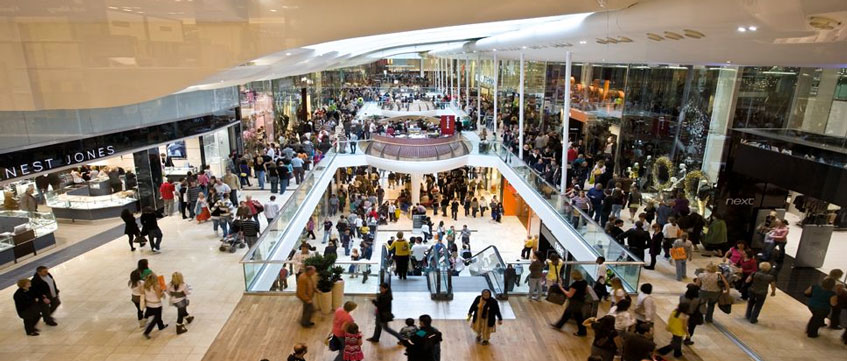The quoted property sector has underperformed the All Share Index by just 2% this year, but companies holding retail assets have been much weaker, and the downside been indiscriminate, writes Alan Carter, managing director, specialist sales, at Stifel Nicolaus Europe.
Shaftesbury and CapCo have exposure to London’s relatively strong West End market but their share prices are down by 12% and 19% respectively, year on year. LandSec and British Land, with roughly half their assets in retail, are both down by 9%, while Hammerson and intu are down by 11% and 37% respectively and now trade on thumping 38% and 55% discounts to NAV.
The equity market smells blood and is merciless.
In April Hammerson aborted its proposed takeover of intu after “extensive engagement” with its shareholders citing, inter alia, “the equity market’s perception of the broader UK retail property market has deteriorated since the start of the year”. That perception by equity investors is now fast becoming a reality.
Prime centres overvalued
I have long argued that so-called prime shopping centres (I just call them large) are overvalued given the increasing capex requirement, ever-shortening lease terms, absence of real rental growth, and more recently the increasing threat of rising voids through retailers going bust or surviving only with enforced rental reductions.
The dearth of investment transactions would seem to bear out the “equity market’s perception” with just under £1bn of assets traded so far this year after less than £2bn last year, compared with £6.5bn four years ago. Bizarrely this led to valuations being held broadly static based on lack of comparable evidence but there are times when valuing to sentiment rather than evidence becomes more appropriate.
Recent half-year figures told differing stories for the two main protagonists. HMSO reported just a nominal decline in the value of its UK centres, just £52m on a £3.5bn portfolio with just 6bps of outward yield shift, even though all bar one of its centres recorded a valuation deficit, and two out of 12 suffered year-on-year income declines of more than 7%.
Value decline
Intu, in contrast, revealed a decline of 7% in the value of its UK assets, a more than 30bps rise in initial yields, and a 2.3% fall in ERV, explaining that “sentiment has weakened”. It’s not just sentiment that’s weakened.
Asset quality seems unlikely to explain this variation in performance given that intu owns four of the top eight ranked centres, by PMA, in the country, whereas HMSO’s most highly ranked centre is Birmingham’s Bullring at 10th, though intu perhaps has a longer tail of assets. All rather odd, except of course, it isn’t. In thin markets, we often end up valuing the valuers.
Some of the intu’s individual centre write downs were brutal, though realistic, and in double digits. Intu has higher leverage (loan to value ratio) and tried to reassure the market that it was unconcerned about this rising above 50% or even more; this level would not breach its banking covenants. The last time we heard talk of covenant concerns was in 2008 and early 2009. Its shares now yield more than 8% for the moment. There’s more to intu’s problems than just weakening sentiment.
Both INTU and HMSO’s shares have tanked post results, in part because INTU revealed a meaningful valuation decline and HMSO didn’t. The market knows it’s coming, it’s just a matter of degree, and for how long. Both management teams stated the obvious – that further tenant failures are likely.
Selling off assets
Both are reportedly trying to sell individual centres in the East Midlands, Derby and Leicester. Intu’s Derby centre (pictured) fell in value by 11%. HMSO doesn’t reveal the valuation performance of individual centres, which is its prerogative, if not much help to shareholders.
One irony in this situation (there are many) is that HMSO aborted its takeover of intu in April, but had its shareholders not “encouraged” the board so to do, the acquisition would probably not have completed yet. It would have looked rather odd had the two valuations been announced in that situation – in fact, extremely odd.
HMSO revealed a new strategy involving a share buyback of £300m, the intended sale of its UK retail park assets, and a significant reduction in its development commitment, with the Brent Cross extension deferred in spite of recent agreements being reached with John Lewis for a new lease, and a large new cinema operator. The long-awaited Croydon town centre redevelopment in which John Lewis/Waitrose has taken a major pre-let is still subject to “a number of planning and land assembly stages ahead of any start on site.” Bishopsgate Goodsyard similarly.
Geographical shift
Intu didn’t reveal a new strategy. Allied to further investment in Europe and its Premium Outlet business, the geographical shift in HMSO’s portfolio reduces its UK exposure, the exact opposite of what the intu takeover would have achieved. Moreover, had the intu bid proceeded, HMSO would have sought to sell £2bn of the combined portfolio’s assets, primarily in the UK in the short to medium term. That would have been a very tough ask in the short term and possibly the medium term, especially given the sudden decline in intu’s values.
HMSO’s shares now trade at 485p, exactly £1.50 below the indicated level at which Klépierre was prepared to start a discussion with HMSO management about a friendly takeover just four months ago. Intu has shown that similar assets are overvalued, which is why others shares are not undervalued, in my view.
The pain for large shopping centres may only just have started, so how fortunate HMSO didn’t proceed with intu, nor indeed Klépierre for HMSO. Two of those management teams have it all to do, the other got lucky. The equity market yet again read the tea leaves better than the professionals.











